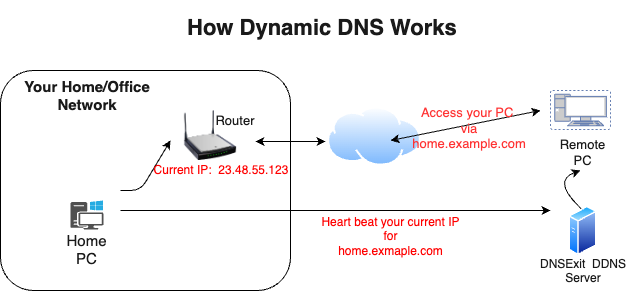Dynamic DNS Services - 100% FREE for all Top Level Domains
Note: We don't provide static IPs. Our DynDNS simply link your dynamic IP to a static domain name. Thus, you can access the network with the domain name no matter how the IP changes.
|
|||||||||||||
|
|||||||||||||
What is Dynamic DNS?Dynamic DNS makes a dynamic IP address act like it is a static IP address, meaning it does not change. It does this by utilizing a hostname and our Dynamic Update Client to keep your hostname updated with the correct IP address. Note: Besides the easy-to-use web interface to manage your DNS, We also provide DNS API Document to update your DNS records remotely. 
|
How to Start your Dynamic DNS ? |
||||
1. Sign up an account |
||||
|
First you need to Sign Up a free account to create DNS for your domains and updating your IP addresses by IP Update clients. |
||||
2. Register a new or use an existing domain name for dynamic DNS |
||||
|
a) If already got a domain name, you can skip this step. However, you do need to change the name servers of the domain to our name servers so that our name servers are in charge of resolving IPs for your domain. b) To start with your dynamic DNS experience, you may simply use our Free Domains. c) You want to choose your own domain name for your dynamic DNS, you can find an available domain name and registere it. |
||||
3. Create DNS for the Domain |
||||
|
||||
4. Automatic Dynamic IP Updates |
||||
| To update domain DNS, you can simply login to your member account to edit DNS for the domain. However, to update your IP address automatically, you need to check our dynamic IP update protocols and clients to know how to automatically update your latest IP address to our name servers. |
||||
|
If you are running Window NT or Linux/Unix, you can use command nslookup to check your IP settings of your hosts at dnsExit.com name servers. Under DOS prompt(Windows) or shell prompt(Linux/Unix), type command nslookup; then specify the name server as ns1.dnsExit.com; finally type one of the host names in your DNS records. You should see the IP of the host displayed on the screen.
|
||||